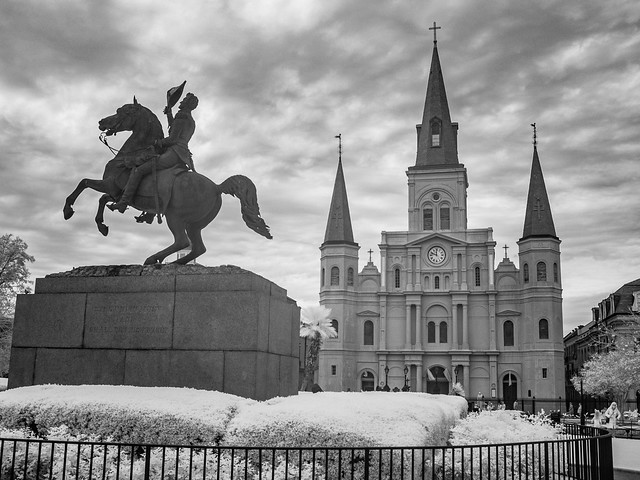
Jackson Square has long been the historic heart of New Orleans. In 1721, French engineers laid out the plans for what would be the capitol of the La Louisiane colony. They designed the new town to have a grid of streets that surrounded a central square, which overlooked the Mississippi River. The square was called the Place d’Armes, and the most important buildings in the city would be built alongside it.
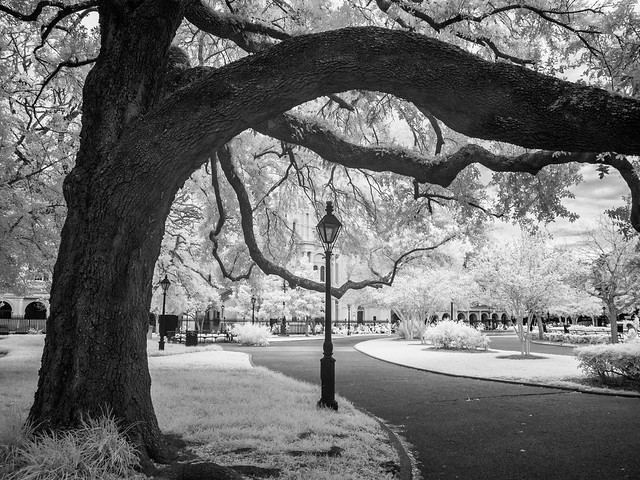
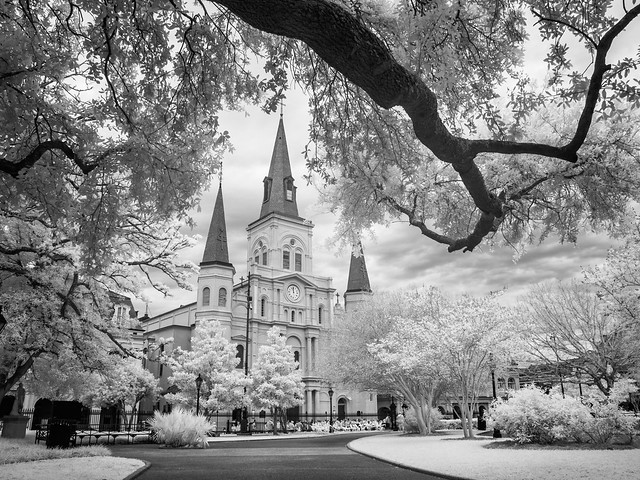
One of the most prominent landmarks at Jackson Square is the St. Louis Cathedral.

The current church was built in 1850. The very first church here was a crude wooden structure that was built in 1718 when the city was founded. That church would be replaced with a larger church in 1727, but it would be destroyed by a fire in 1788. The church was rebuilt in 1794, but that structure was torn down as the church expanded and was redesigned to meet a growing congregation.

To the left of the St. Louis Cathedral is The Cabildo, which was built in 1799 and served as the seat of government when New Orleans was a Spanish colony. The building would later be used as a courthouse for the Louisiana Supreme Court, and is now used as a museum. To the right of the cathedral is the The Presbytère, which was built in 1813 and is also now used as a museum.
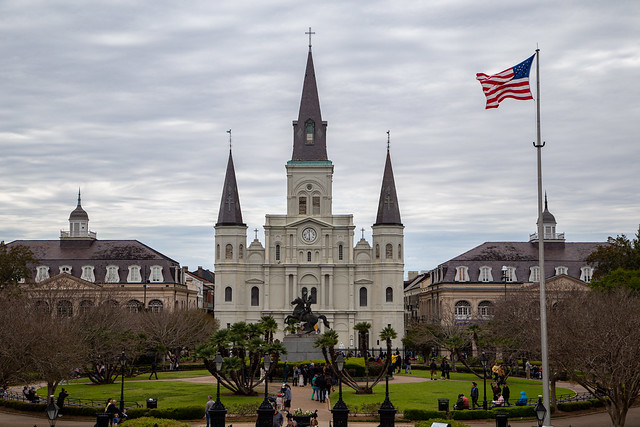
The Cabildo was also the spot where the final version of the Louisiana Purchase was signed in 1803.

In the 1840s, the Baroness Micaëla Almonester Pontalba visited the city to check on her real estate holdings and found the Place d’Armes to be a muddy and neglected mess. She personally financed and redesigned the square, adding cast-iron fences, walkways and formal gardens. A statue of Andrew Jackson was built in the center of the park, in honor of the general's role in saving the city from British invasion during the War of 1812. In 1851, the Place d’Armes was renamed Jackson Square.

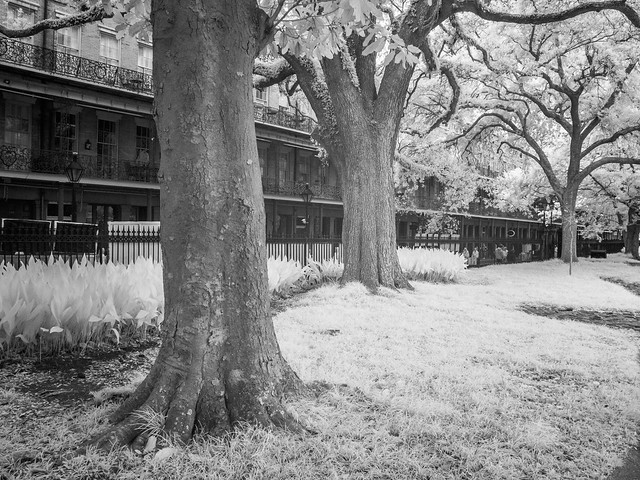
The Baroness Pontalba also built two Parisian-style row-houses on the sides of Jackson Square, at a cost of $300,000. The Pontalba buildings were the first buildings to feature iron balconies in the city, which would become a prominent architectural style. The first floor of the buildings are shops, and the upper floors have since been converted into apartments. Truman Capote wrote that the Pontalba buildings were "the oldest, in some ways most somberly elegant, apartment houses in America."







From there I walked back over to the St. Louis Cathedral, which was surrounded by a crowd of people. We were there on a busy Saturday afternoon, and the park and streets around it were filled with people.
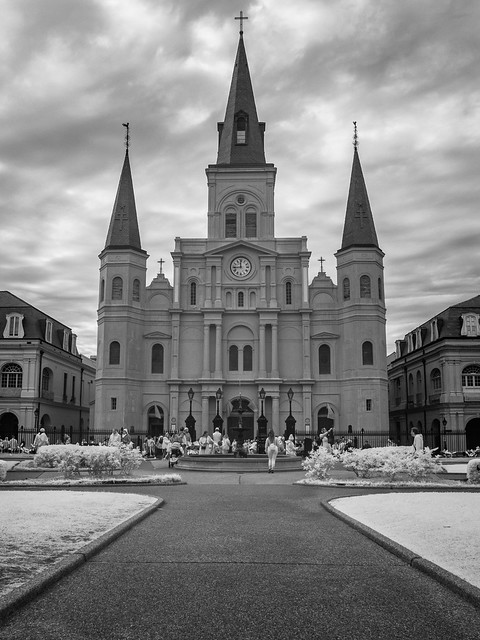
Directly in front of the cathedral, dozens of people stood and watched a street-performer. But off to the side, with no crowd around him, was a street preacher yelling into a microphone. They were joined by other tourists trying to pass by and several pigeons looking for a meal.
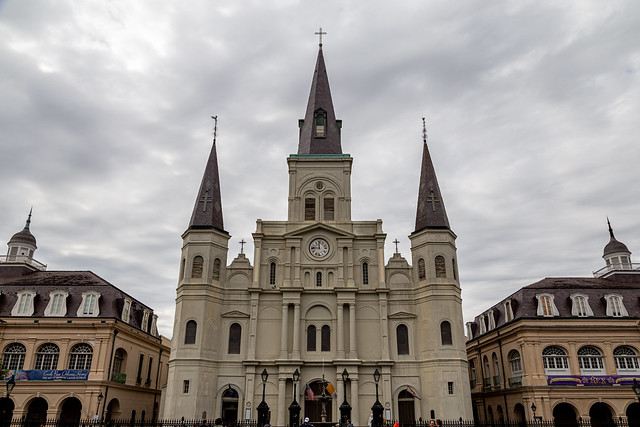
The doors to the church were open, and I ducked inside. The heavy wooden doors, along with a recording of choir music, helped to dampen the sounds from the street outside.

Jackson Square sits on the highest ground in the city, so the park and the cathedral did not see any flooding during Hurricane Katrina. The hurricane did cause some damage to the cathedral - the high winds punctured a hole in the roof, resulting in some water damage to the pipe organ. And two large oak trees behind the church were toppled.
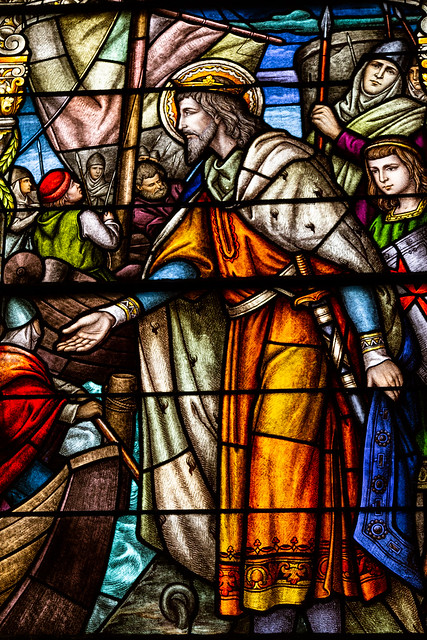
The next night I headed back out to Jackson Square after sunset to try to get a few pictures. I headed over to the walkway across from the square that provides a nice overlook to the mighty Mississippi River. In the distance are the twin spans of the Crescent City Connection.

This was on a Sunday evening, and it was much quieter when compared to the night before. For awhile, I was the only person at the overlook. Occasionally I'd be joined by some tour groups or people stopping to eat beignets that they just got from Cafe Du Monde.
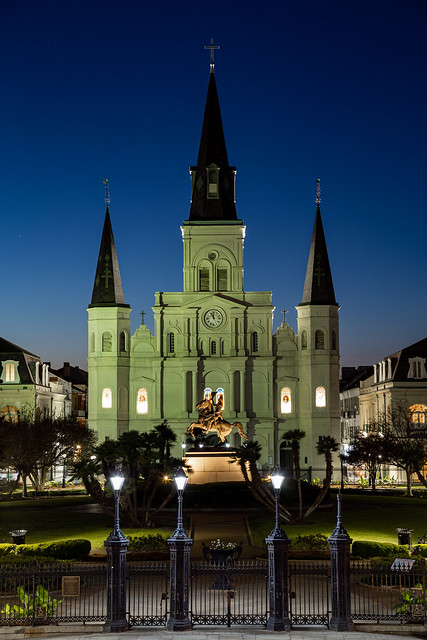

And the view from the front of the cathedral, after the street performers, preachers, tarot card readers, artists and voodoo doll sellers had gone home for the night.
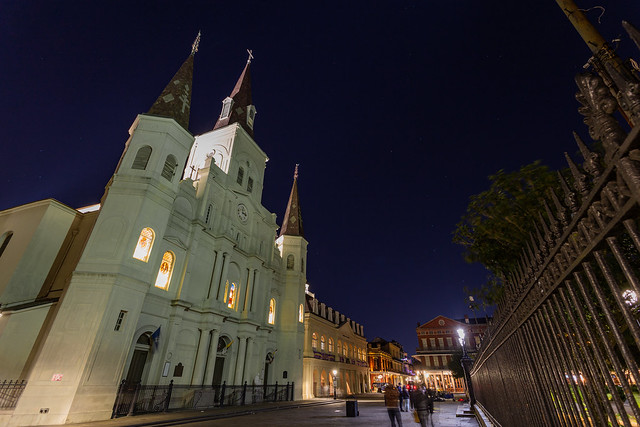
And one last shot, of the Pontalba Building. This was taken in a quiet moment between two separate ghost tours walking by.
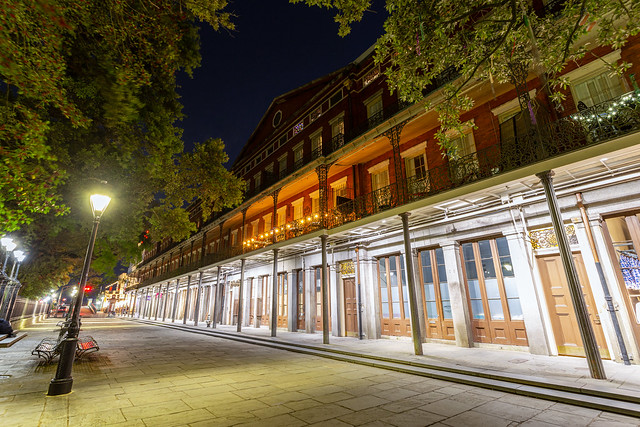

No comments:
Post a Comment